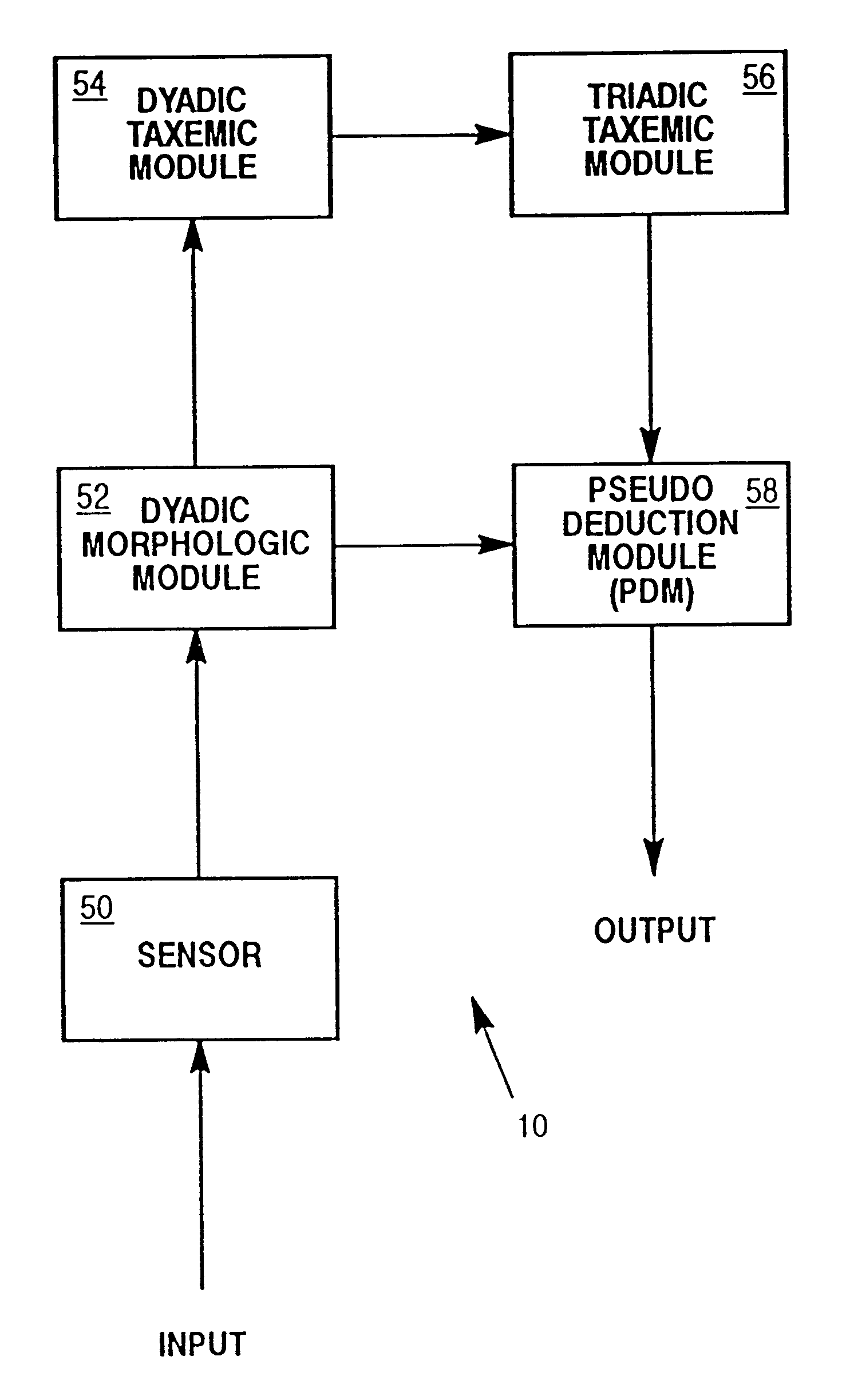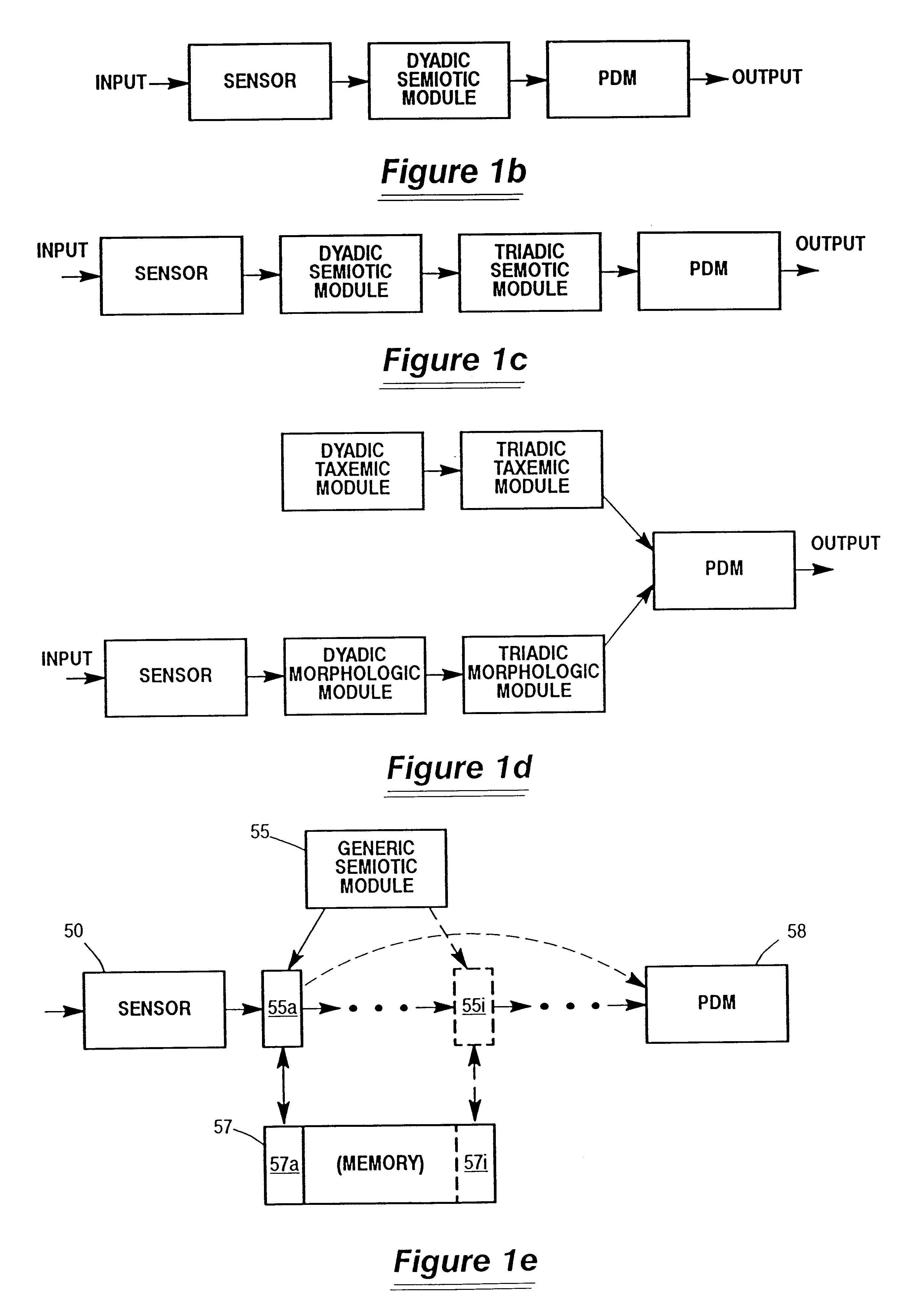Autognomic decision making system and method
a decision-making system and autognomic technology, applied in the field of autognomic decision-making system and method, can solve the problems of limited system and computational complexity of the system
- Summary
- Abstract
- Description
- Claims
- Application Information
AI Technical Summary
Problems solved by technology
Method used
Image
Examples
Embodiment Construction
FIG. 1a shows the five major components of a gnome 10 of a presently preferred embodiment. The gnome 10 has a sensing module 50, a dyadic morphologic module 52, a dyadic taxemic module 54, a triadic taxemic module 56 and a pseudo deduction module 58. The dyadic and triadic modules 52, 54, 56 all utilize semiotic processing and are also referred to as semiotic modules.
The sensor 50 acts as the interface between the other components in the gnome and the training and query data which it senses. The sensor 50 is configured to receive data in a prespecified format and identifies elemental symbols to be analyzed and, preferably, identifies or creates two orders of delimiters. The first order delimiters identify first order sets of sequential elemental symbols; the second order delimiters identify second order sets of sequential first order sets.
In the preferred embodiment, text is sensed by the sensor 50. Alpha-numeric characters are identified as elemental symbols. Spaces and punctuation...
PUM
 Login to View More
Login to View More Abstract
Description
Claims
Application Information
 Login to View More
Login to View More - R&D
- Intellectual Property
- Life Sciences
- Materials
- Tech Scout
- Unparalleled Data Quality
- Higher Quality Content
- 60% Fewer Hallucinations
Browse by: Latest US Patents, China's latest patents, Technical Efficacy Thesaurus, Application Domain, Technology Topic, Popular Technical Reports.
© 2025 PatSnap. All rights reserved.Legal|Privacy policy|Modern Slavery Act Transparency Statement|Sitemap|About US| Contact US: help@patsnap.com



